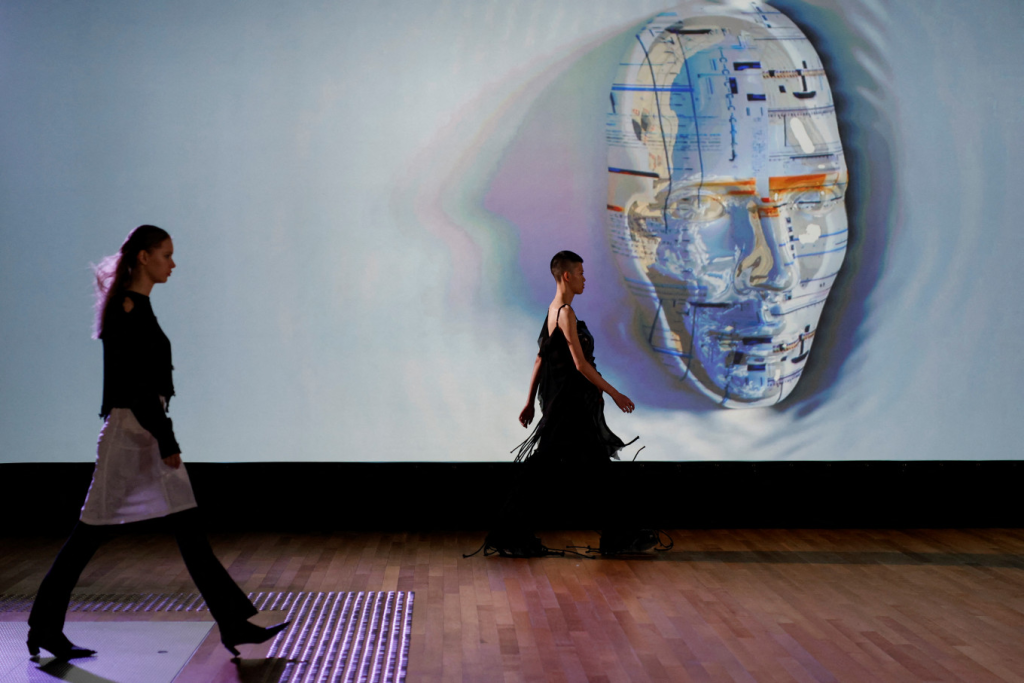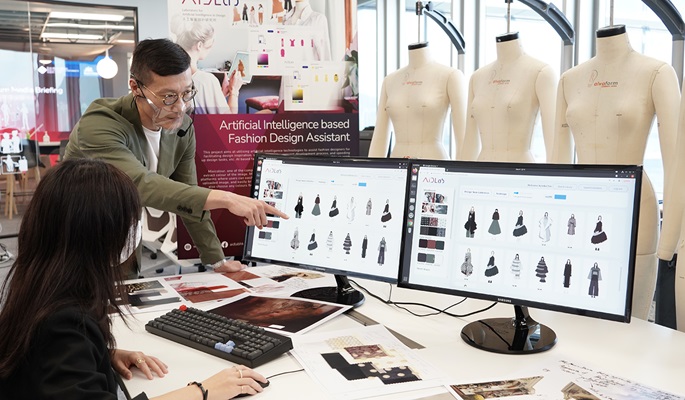AI is transforming the fashion world but the fast growing technology will never be a replacement for designers’ “original creativity”, according to the head of a pioneering project.
Fashion innovator Calvin Wong has developed the Interactive Design Assistant for Fashion (AiDA) — the world’s first designer-led AI system.
It uses image-recognition technology to speed up the time it takes for a design to go from a first sketch to the catwalk.
“Designers have their fabric prints, patterns, colour tones, initial sketches and they upload the images,” Wong told AFP.
“Then our AI system can recognise those design elements and come up with more proposals for designers to refine and modify their original design.”
Wong said AiDA’s particular strength was its ability to present “all the possible combinations” for a designer to consider, something he said was impossible in the current design process.

An exhibition at Hong Kong’s M+ Museum in December featured collections by 14 designers developed using the tool.
But Wong stressed it was about “facilitating designers inspiration” not “using AI to take over a designers job, to take over their creativity”.
“We must treasure the designer’s original creativity,” he added.
Wong heads up the Laboratory for Artificial Intelligence in Design (AidLab), a collaboration between Britain’s Royal College of Art (RCA) and Hong Kong Polytechnic University where he is a professor in fashion.
– ‘Transformational’
RCA vice chancellor Naren Barfield predicted the impact of AI on the fashion industry would be “transformational”.
“The impact is going to be huge from the ideation and conception stage through to prototyping, right the way through to manufacture, distribution and then ultimately recycling,” he said.

So-called personalisation is already being used to improve customer experience with better product recommendations and more effective searches, helping shoppers find what they want quickly and easily.
But as the technology evolves so too is the range of highly specialised tools being developed.
AiDA was just one of the AidLab projects being showcased in the British capital ahead of London Fashion Week, which started on Friday.
Others included the Neo Couture project which aims to use advanced technologies to digitally preserve the specialised skills and techniques used by couturiers.
With the UK fashion industry facing a skills shortage, it is creating an AI-assisted training system to help teach couture skills.
Another project aims to increase sustainability to reduce the estimated 92 million tonnes of clothing that ends up in landfill each year.
One potential use of the AI Loupe project is to help designers overcome the problems of using so-called dead stock fabric.
Designers can photograph leftover fabric and then use the tool to get the missing details to assess its suitability for their designs.
“It uses the camera as your index, the material is the QR code that brings the information,” said project researcher Chipp Jansen.
– Retain control –
The future of AI in fashion design, however, is not clear cut.
New York brand Collina Strada’s founder Hillary Taymour this week admitted that she and her team used AI image generator Midjourney to create the collection they showed at New York Fashion Week.

Although Taymour only used images of the brand’s own past looks to help generate its Spring/Summer 2024 collection, looming legal issues could keep AI-generated clothes off the catwalks for now.
“In terms of fashion designed by AI, I would expect to hear from designers that there are questions of intellectual property rights,” said Rebecca Lewin, a senior curator at London’s Design Museum.
“Because whatever comes back will have been scraped from published images and to get that regulated will need a lot of work.”
The RCA’s Barfield said the area would be tricky but he expected it to be resolved through test cases and legislation.
“I don’t know how fast (AI) will be transformational but if it gives companies competitive advantage I think they’ll invest and take it up quickly,” he said.
The only thing currently holding companies back was the “massive investment” in infrastructure required, he said.
“But once they’ve done that they can take the plunge then they will be making savings on material waste and productivity,” he added.
As for designers’ fears that it might become a substitute for the human creative process, he said the key was who controlled the decision making.
Using a “genetic algorithm” where you started with one design and used the software to generate successive ones the computer could produce 1,000 varying looks, something that might take weeks to draw, he said.
On the other hand if the designer retained control AI could offer huge benefits by hugely speeding up the process “without necessarily making the decisions for them”, he added.









